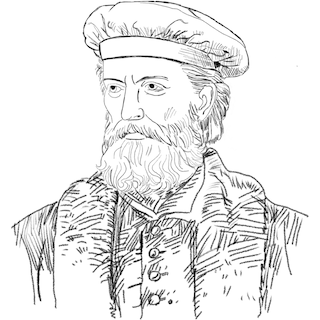The world's oceans are running a fever, and the consequences of this are alarming. With sea surface temperatures breaking records in recent months and a potential El Niño weather pattern looming, there is growing concern over the impact of ocean warming on marine life, extreme weather, and global climate change.
The primary culprit for this troubling trend is human activity, notably the burning of fossil fuels and deforestation, which have pumped heat-trapping carbon dioxide into the atmosphere. Over the past century, the planet's vast oceans have absorbed more than 90% of all the excess heat energy trapped by CO2, causing their average temperatures to rise consistently. The ocean's uppermost layer, down to about 250 feet, is warming the fastest, with an average increase of about 0.11 degrees Celsius per decade since the 1970s. Marine heatwaves are also becoming more frequent and severe, with the number of days that qualify as heatwaves increasing by over 50% in the past century.
These warming trends significantly affect marine life, particularly organisms sensitive to even slight temperature changes. Corals, for example, can become stressed by a mere 1-degree Celsius increase, causing them to expel the symbiotic algae that provide them with energy, a process known as bleaching. In some cases, corals can recover from these events, but in others, they may not. Warming oceans also contribute to more intense storms like hurricanes and tropical cyclones. Scientists predict that warmer seas will increase the likelihood of these storms reaching category 4 or 5 on the Saffir-Simpson storm-strength scale, speeding up the rate at which they intensify and increasing the likelihood that they will release enormous volumes of rain. Another concerning consequence of warmer oceans is rising sea levels. As the water heats up, it expands, causing the oceans to grow and sea levels to creep up. Between 1971 and 2010, heat-driven sea-level rise added about 0.8 millimetres to the ocean's height yearly. Thermal expansion has contributed to about half of all the sea-level rise observed across the planet.
The recent spike in global ocean temperatures has been attributed, in part, to the potential onset of an El Niño climate pattern. El Niño, characterised by warmer-than-average surface waters in the Pacific Ocean, can have domino effects on weather worldwide. The last major El Niño in 2016 drove the planet to record heat and had devastating consequences, including severe droughts, increased precipitation, and diminished Atlantic hurricane activity. El Niño events can also trigger ecological disasters, such as wildfires, coral bleaching, polar ice loss, and the spread of diseases. While scientists are not yet sure about the specific impacts of the recent ocean temperature surge, there is consensus that the oceans are steadily growing warmer. A study published in Nature Reviews found that the upper reaches of the oceans have been heating up around the planet since at least the 1950s, with the most noticeable changes observed in the Atlantic and Southern oceans. The United Nations Intergovernmental Panel on Climate Change (IPCC) has also stated that it is "virtually certain" that the upper levels of the oceans have warmed over the past half-century and "extremely likely that human influence is the main driver."
It is crucial to address its root cause to mitigate the impacts of ocean warming: greenhouse gas emissions from human activity. Reducing reliance on fossil fuels and transitioning to renewable energy sources, such as solar and wind power, can help curb CO2 emissions. Additionally, protecting and restoring forests, which act as natural carbon sinks, can help to remove excess CO2 from the atmosphere. Governments, industries, and individuals can all participate in this effort by investing in green technologies and adopting more sustainable practices in agriculture, transportation, and waste management. Furthermore, increasing our understanding of ocean warming and its effects is vital for developing effective adaptation strategies. Investments in oceanographic research, monitoring, and technology can provide valuable insights into the changing marine environment, enabling better predictions of future changes and facilitating targeted responses to protect ecosystems and coastal communities. Another avenue to explore is the development of innovative solutions to directly mitigate the effects of ocean warming, such as deploying shades or artificial upwelling systems over coral reefs to cool the water and prevent bleaching events. However, these approaches should be carefully considered to ensure they do not have unintended consequences for marine ecosystems. Promoting awareness of the issue is also essential to engage the public and galvanise support for action. Educating people about the importance of the oceans and their threats can help build a global movement demanding change and urging governments to take robust and decisive action against climate change.
READ MORE
